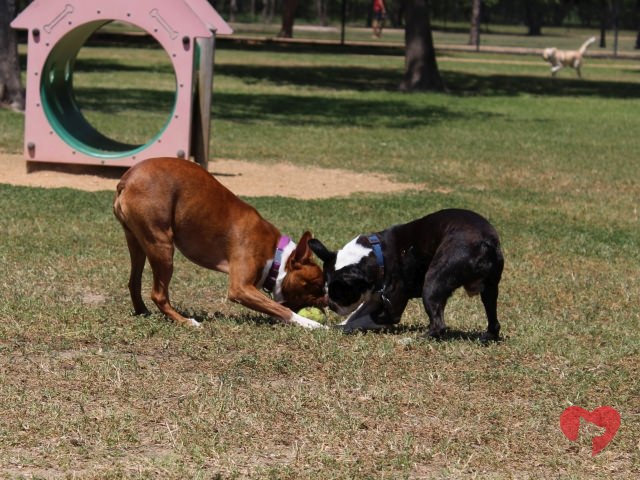There are many things to consider before taking your pet to a dog park. Here in our area of Tennessee where hiking trails and outdoor activities abound, I do not typically take my dogs to a dog park. I can take a dog with me almost everywhere I go, hiking, biking and camping, but not everyone is so lucky.
In some urban areas, there are fewer choices for exercise/fresh air, so dog parks are an important and viable option. First, make sure your dog is well vaccinated by a vet you trust. Make sure the veterinary team is aware that you plan to frequent dog parks, as it might alter their recommendations. Your dog should be on a monthly heartworm and intestinal parasite program, as well flea and tick coverage.

Your dog should always come when called and this skill should first be practiced in areas where the temptation to disobey is less than at a dog park. He should be identified with a microchip (permanent ID that goes under the skin) in case of an escape from you and also identified with visible identification, like a collar and tags. Our public areas have signs that dogs must be registered with the city to have access to many of our parks, so check your local rules.
When you arrive at the dog park, make sure that clean fresh water is available (I usually have a container of water and a collapsible dog bowl). There should be no standing water, like puddles because these can house infectious diseases. Make sure the enclosure is secure and any fencing or structures are in good repair with no sharp edges to reduce the chances of injury to your pet. If your dog is like mine, she will find the one dangerous thing in an acre of area, so I always scan the perimeter carefully before releasing her.

Inspect the area to insure that the waste removal policies are being followed and be sure you have access to your own poop bags. Most of our dog-friendly zones have stations with fecal bags and a bio-trash can for the use of the patrons, but it is a good idea to have your own in case of a an empty station and a poop emergency.
Remember that although some canine infectious pathogens are killed by direct sunlight, many viruses can linger in shaded areas for prolonged periods. It is a risk to take a puppy that is not finished with his entire vaccine booster series to a dog park. The socialization is a great thing however, so choose areas to walk the incompletely vaccinated puppy that are bathed in direct sunlight for long periods each day and expose him/her as much as possible only to dogs that at least are known to you.
Watch your pet during his/ her play and try to gauge body language of playmates. Should a fight occur, do not put your hands or body in harm’s way. Try to break apart the confrontation in other ways, like distraction, a stick or cold water. Many people have ways to identify their dogs as ones that need more space. A yellow ribbon tied onto the leash is one such signal. There are also leashes and collars that are embroidered with messages about needing space or special handling, so watch for those.

I carry a small canine first aid kit in the back of my Jeep in case my dog (or someone else’s) needs a quick fix up. It has clean water, a pair of tweezers, a cold pack (the kind I can squeeze to activate the cold) latex gloves and some basic bandages. So far I have needed to clean a few wounds and remove a tick or two and it has served me well.
Do not assume that everyone at a dog park is as responsible as you are. Expect the best, but plan for the worst. Be as responsible and aware as you possibly can and dog parks can be a fun outing for you both!
